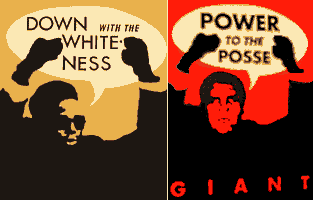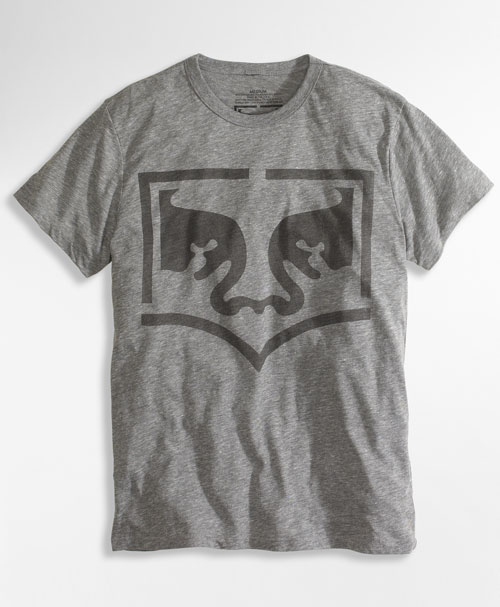Artist Shepard Fairey, best known as the creator of the Obama campaign’s “Hope” graphic, has seen his share of ups and downs this year.
After the explosive success of the “Obamicon,” the Associated Press accused him of using the then-U.S. senator’s photo without permission of the photographer. Archivists and other contemporaries have been critical of the originality of his work even before the AP’s claim.
But none of that seems to have stalled Fairey’s success: earlier this fall, he unveiled his new line of clothing – Obey x – with the Levi’s brand in a showy New York Times Square opening.
On the evening of Oct. 29, Fairey wheat pasted ads for his clothing onto sheets of plywood that had been attached to scaffolding surrounding the store’s corner location in the heart of the Big Apple. According to the Levi’s press release, he then signed a new collection of museum-quality posters for fans who had eagerly lined up. In a bit of contradiction, a “Post No Bills” directive loomed from unadorned areas of the plywood.
Fairey’s recent 15 minutes of fame, however, may pale in comparison to the latest developments in the copyright infringement case that AP alleged against the artist during the weeks following Barack Obama’s inauguration as president.
According to an article in the Los Angeles Times, photographer Mannie Garcia originally took the Obama photo in 2006. Garcia described his relationship with the Associated Press at that time as a temporary hire arrangement, not a freelance or contract position.
Though Fairey enjoyed huge success using the photo and shared none of the credit or proceeds with Garcia, Garcia is not so concerned about the money. He says, “…it’s about recognition. I made the most iconic image of our time, and I’d like it to make a difference, not make me money.”
After the AP’s accusation, Fairey preemptively filed suit against them. Anthony Falzone, executive director of the Fair Use Project at Stanford University, headed his legal team, but in October, the case fell apart.
Fairey admitted to destroying evidence and the Fair Use attorneys tried to abandon the suit. The Associated Press disputed the change in counsel and the time it would add to the case, but late last month, a Los Angeles judge ruled to allow his attorneys to quit.
With Garcia not actively seeking payment, it might seem every bit the Goliath corporation going after a small-time street artist. But a quick Wikipedia search shows Fairey has worked on advertising for several corporate brands like Pepsi, Hasbro and Mozilla.
From the beginning, Fairey has been challenged over the images he used.
In the early 1990s, in San Francisco and several other cities, “Andre the Giant Has a Posse” stickers glared out from nearly every block. Not long after, the stickers morphed into the word “Obey” and a pared-down image of the late wrestler’s face. Titan Sports, which would later become World Wrestling Entertainment, prohibited Fairey’s use of Andre’s name.
The independent news site Indybay.org also disputes Fairey’s legitimacy as an artist in a post featuring photos of Fairey’s “Obey x” display – which includes the face of Andre the Giant squeezed into the trademark Levi’s pocket shape – currently housed at the Levi Strauss main store in San Francisco.
Fairey also has drawn allegations of exploitation in the past.
For years, political artists such as Mark Vallen and Josh MacPhee have questioned whether Fairey’s work exploits artists of color. MacPhee said he suspects that in his earlier years, Fairey lifted numerous images from the book "Prop Art" by Gary Yanker, as his work overlaps with much of the book’s content.













